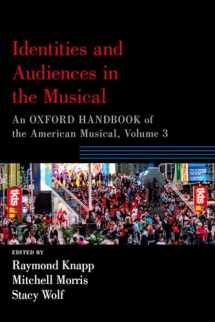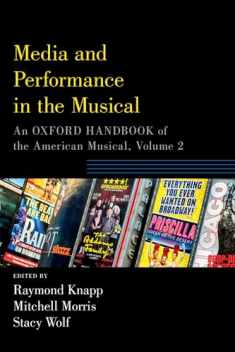
Identities and Audiences in the Musical: An Oxford Handbook of the American Musical, Volume 3 (Oxford Handbooks)
ISBN-13:
9780190877798
ISBN-10:
0190877790
Author:
Raymond Knapp, Stacy Wolf, Mitchell Morris
Publication date:
2018
Publisher:
Oxford University Press
Format:
Paperback
264 pages
Category:
Musical Genres
,
Music
FREE US shipping
Book details
ISBN-13:
9780190877798
ISBN-10:
0190877790
Author:
Raymond Knapp, Stacy Wolf, Mitchell Morris
Publication date:
2018
Publisher:
Oxford University Press
Format:
Paperback
264 pages
Category:
Musical Genres
,
Music
Summary
Identities and Audiences in the Musical: An Oxford Handbook of the American Musical, Volume 3 (Oxford Handbooks) (ISBN-13: 9780190877798 and ISBN-10: 0190877790), written by authors
Raymond Knapp, Stacy Wolf, Mitchell Morris, was published by Oxford University Press in 2018.
With an overall rating of 4.1 stars, it's a notable title among other
Musical Genres
(Music) books. You can easily purchase or rent Identities and Audiences in the Musical: An Oxford Handbook of the American Musical, Volume 3 (Oxford Handbooks) (Paperback) from BooksRun,
along with many other new and used
Musical Genres
books
and textbooks.
And, if you're looking to sell your copy, our current buyback offer is $0.3.
Description
Issues of identity have always been central to the American musical in all its guises. Who appears in musicals, who or what they are meant to represent, and how, over time, those representations have been understood and interpreted, provide the very basis for our engagement with the genre. In this third volume of the reissued Oxford Handbook of the American Musical, chapters focus on race, ethnicity, gender, and sexuality, regional vs. national identity, and the cultural and class significance of the musical itself. As important as the question of who appears in musicals are the questions of who watches and listens to them, and of how specific cultures of reception attend differently to the musical. Chapters thus address cultural codes inherent to the genre, in particular those found in traditional school theater programs.


We would LOVE it if you could help us and other readers by reviewing the book
Book review

Congratulations! We have received your book review.
{user}
{createdAt}
by {truncated_author}




